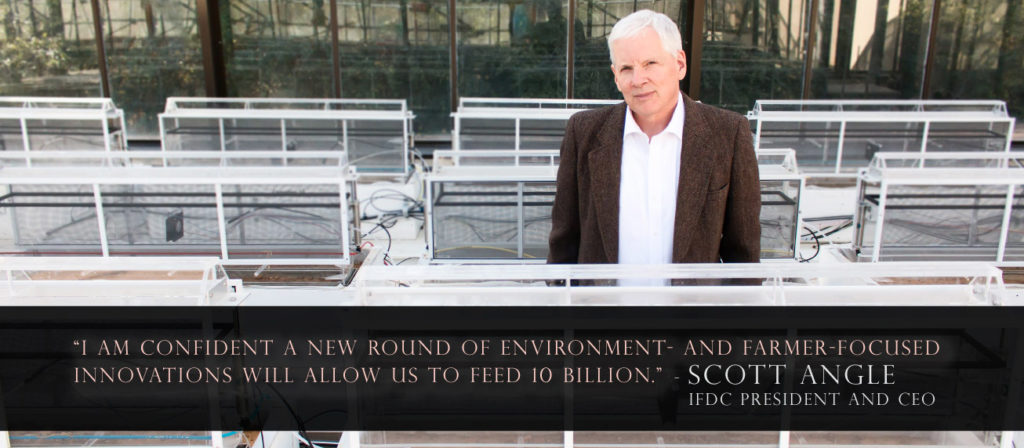
By Scott Angle (@ScottAngleIFDC), IFDC President and CEO
World leaders in Paris recently reached a historic global agreement on reducing humans’ influence on climate. As momentum grows around this triumph, the vital role of agriculture must not be overlooked.
According to a recent World Bank report, agriculture will be the main driver of climate-generated poverty. Rising temperatures threaten harvests, generate higher food prices and trigger unstable global food supplies.
The result? 100 million additional people in poverty by 2030.
We must transform this grim future into one of opportunity. A more resilient agricultural system is possible when we utilize climate-smart technologies and farmer-focused cropping practices.
Agriculture must mitigate its effect on climate change.
Mineral fertilizers will drive the productivity increases needed to feed 10 billion by 2050. But fertilizer production and use contribute to agricultural greenhouse gas emissions. Innovations to intensify food production cannot come at the expense of the environment.
One way we can solve future challenges is by learning from the past. For centuries, rice farmers in Japan and China formed mud into fist-sized balls filled with fertilizer or manure. The nutrient-packed balls were pushed into the soil between rice plants. Farmers wasted less fertilizer and experienced higher yields. International Fertilizer Development Center (IFDC) researchers used this technique to fine-tune urea deep placement (UDP), an environmentally friendly and income-boosting fertilizer application method.
UDP accomplishes what agriculture must do in a changing climate: reduce pollution and increase efficiency. Deep point placement delivers more nutrients to the plant, reducing fertilizer use and water contamination. The technique significantly cuts nitrous oxide emissions, the dominant greenhouse gas responsible for ozone destruction. Further, farmers in Bangladesh are experiencing 18 percent greater yields using one-third less urea. This translates to an additional 542 kilograms of rice per hectare on UDP plots compared with rice grown using broadcast fertilizer application.
Wide-scale adoption of climate-smart technologies and practices like UDP may eliminate most of agriculture’s total GHG emissions. However, these methods must be accessible and profitable for smallholder farmers.
Climate-smart practices must be farmer-smart.
The majority of smallholder farmers live in rural areas prone to climate risks and feel the effects most sharply. By 2080, these farmers could experience 15 percent yield decreases in sub-Saharan Africa and 23 percent cuts in South Asia. Our ability to feed ourselves depends on sustainable methods that build farmers’ resilience to climate shocks. Better management practices, such as UDP, integrated soil fertility management (ISFM) and efficient water usage, strengthen soils and crops. These methods also increase profits.
In Bangladesh, rice farmers using UDP earn $220 more per hectare. But when IFDC first introduced UDP into the country, farmer adoption was not immediate. Producers had no incentive to purchase urea briquettes because subsidized urea was less expensive. After fertilizer prices quadrupled in 2008, the Bangladeshi government recognized UDP’s money-saving value and began promoting the technology. Once farmers saw their profits increase, adoption expanded.
Developing sustainable innovations that put farmers first is not a straight line. Solutions must constantly adapt to ensure farmers profit and the environment benefits. Today, engineers are developing mechanical applicators to ease farmer labor related to UDP. The technology is being expanded across sub-Saharan Africa and adapted for use on a variety of soils and crops.
Can we nourish a growing world under a changing climate? About 80 years ago, many said we could not feed a population of 7 billion people. But with improved seeds, fertilizers and other Green Revolution-era technologies, the farmers of the world rose to meet the challenge. Today, I am confident that a new round of environment- and farmer-focused innovations will allow us to feed 10 billion.
Updated December 15, 2015, to reflect the adoption of the climate agreement in Paris.




